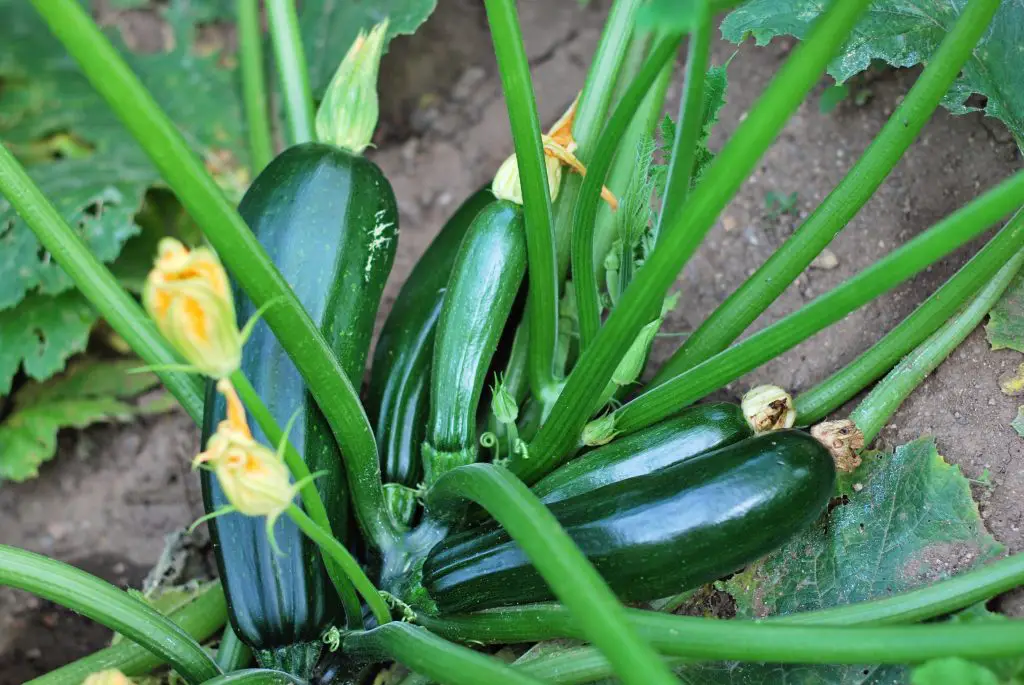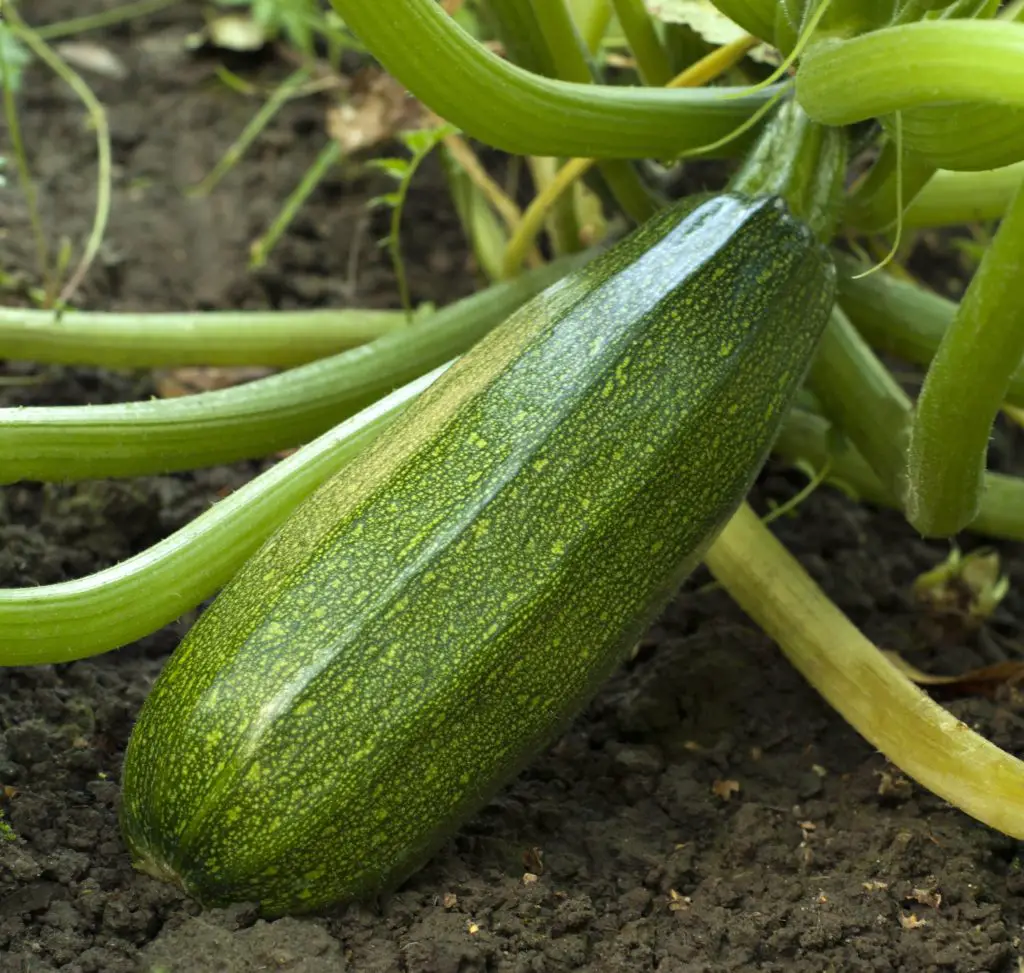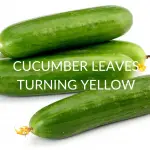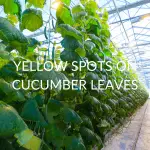Zucchini is a fan favorite food for many, due to its flavor and versatility in cooking. However, when growing zucchini plants, discoloration among the leaves can provide concern. In this article, the reasons for zucchini leaves turning white will be discussed. We will also answer the question of why zucchini leaves may have white veins. Lastly, you will learn whether or not you should cut off zucchini leaves that show one of the discussed conditions.
Why Are Your Zucchini Leaves Turning White (And What To Do About It)?
White leaf discoloration is common for zucchini plants and can be attributed to various causes. These causes can be natural and healthy, but they can also be harmful to the plant. Unfortunately, it can be difficult to determine whether or not the discoloration is healthy. Luckily, there are some telltale signs to look for to determine the best course of action. Let’s discuss some of the potential culprits and solutions.
The Cause of White Discoloration
First, it is important to note that some discoloration on the leaves of the plant is normal. As zucchini plants age and mature, some discoloration on the leaves is considered healthy. These may resemble large silvery spots or blotches on the surface of the leaf, and do not rub off or smear at all.
In contrast, there are a few causes of white discoloration that are not healthy for the zucchini plant. These can actually cause damage and prevent healthy growth of the plant. The most common cause of non-healthy white spotting on zucchini plants is called powdery mildew.
Powdery Mildew
This fungus resembles a powder, hence its name. Many people report it being white and sticky. It should rub off or smear with your fingers, which can easily distinguish it from healthy discoloration.
Mozaic Virus
Another frequent cause of white coloring or discoloration is called mosaic virus, which is spread by cucumber beetles. These insects can cause a great deal of damage if not prevented beforehand. This infection causes permanent scarring of the leaves that spreads quickly to other parts of the plant. With this fungus, it is crucial to watch out for a quick spread to other leaves.
Insects
One last potential cause of discoloration is from insects. Certain insects such as thrips, aphids, and whiteflies like to suck on the juice from different parts of the plant. This causes scarring and damage over time. The discolorations left behind can cause permanent damage that can prevent the healthy growth of the zucchini.
Although this may look similar to the mosaic virus, the scarring may not appear in a specific pattern. It should also not appear to spread as rapidly as with a fungus and should appear more random. You can specifically look for scarring that is pale in color, and scattered across the leaves.
The Solution for White Discoloration
Luckily, there are some solutions that may help to fix the problem before it progresses. The first step to resolving the issue is to determine which specific cause of discoloration is the culprit.
If the white spots smear or rub off of the plant, you can assume that the cause is powdery mildew. On the other hand, if there is scarring on the plant that looks like a spreading pattern, you can expect the culprit to be mosaic virus. In contrast, if the scarring does not form a pattern or spread, but instead appears to be more random, it is likely due to insects.
Once you have the culprit identified, then you can proceed with the appropriate solution. If you have determined that the cause is powdery mildew, you should remove the affected leaves to prevent further spread. To treat the problem before it starts on other leaves, you can utilize neem oil to spray on the plant which is both safe and effective against the fungus.
If the mosaic virus is the expected culprit, the bad news is that there is no way to salvage the plant. Once the damage has been done by this virus, it cannot be reversed. In the future, you can prevent this problem by rotating crops, and/or planting closer towards the end of the season.
You can attempt to clear out the area and replant the plants with preventative measures to support the healthy growth of new plants. Taking steps when planting the zucchini can prevent influence by a damaging fungus or virus later on. When replanting, you should ensure that all of the infected plants is removed before planting a new one to support a healthy start and growth.
Additionally, you can utilize row covers to prevent beetles from reaching the plants. Lastly, you can also utilize neem oil to prevent the virus spread by cucumber beetles. Coincidentally, if the scarring and damage is caused by insects instead of the mosaic virus, insecticidal soap is an organic option that can ward off unwanted insects without disturbing the good ones.

Why Do Your Zucchini Leaves Have White Veins?
Many gardeners notice that the leaves on their zucchini plants can turn white as time goes on. There can be more than one reason for this occurrence. The reasons for this discoloration can have both healthy and unhealthy causes. Let’s review some of the potential causes of white veins in zucchini leaves.
The Cause of White Veins in Zucchini Plants
There are a few distinct reasons why the veins on your zucchini plants may be turning white, physiological or genetic.
Leaf-silvering is caused by whiteflies, and in some serious cases can cause the whole leaf or fruit to turn white. It starts with the veins, then can progress to the rest of the leaf and other parts of the plant if left untreated. This condition can cause development issues for the plant, stunt growth, and can cause some systems to not form well in younger plants.
Some cases are caused by other parasites, such as several types of vine borers in the stems of affected plants.
Another possibility concerns the chemicals and nutrients of the soil. Zucchini plants that are not getting all of the nutrients they need can display some discoloration, among other issues. Soil with too acidic or basic of a pH level can also cause this change and deterioration of the plants and leaves.
When spraying for some insects or working around the plants, leaving remaining soil on the leaves can transfer the soil bacteria to the leaves, which can cause adverse effects such as discoloration.
The last possibility is that the coloration is due to the plant’s genetics. There is a specific gene that has been identified that causes it in cucurbits. Some varieties have it and some don’t, the mottling increases with the age of the leaf. It causes no adverse effect in the plant and can be disregarded.

The Solution for White Veins in Zucchini Plants
As with resolving the issue of white discoloration in leaves, it is important to determine the cause of white veins before taking action. Different causes warrant different solutions, therefore it is crucial to identify the appropriate resolution.
First, for the parasite-induced leaf-silvering, the most effective treatment is to get the whiteflies or other parasites under control. Most plants will be able to recover if they are caught early on. There are a number of predaceous insects that feed on whitefly and one commercial parasitoid wasp, Eretmocerus emericus, that has been used successfully in greenhouses.
Chemical control of whiteflies can be difficult as the adults and immature stage occur on the undersides of leaves, particularly older leaves, making spray coverage difficult. In this case, bringing in other insects to keep the whiteflies under control may be the best option.
For the non-parasite-caused whitening of the veins, you can find many commercial soil pH and nutrient testing kits. These tests can give you a good idea of the make-up of your soil, and if there is a deficiency of any key nutrients that the plant needs to flourish. From there, you can determine an appropriate course of action to support healthy plants.
Once the soil issue has been resolved and returned to a healthier baseline, most plants should recover rather quickly. You should monitor the degree of white veins on the plants to determine if they improve over time. If there is no improvement, you should consider alternate causes and solutions to resolve the issue.
Should You Cut Off White Zucchini Leaves?
Pruning a zucchini plant is an important part of keeping it healthy. Proper pruning can also help to initiate further healthy growth of the plant. When pruning, it is crucial to only cut off the leaves that are causing harm to the plant. In terms of white zucchini leaves, you should only cut off leaves that are white due to fungus or disease.
Again, the first step in this process should be to determine whether the discoloration is healthy or due to a fungus. Remember that some white discoloration is normal and the sign of a healthy plant. It is important to be able to distinguish the difference prior to pruning the plant.
When pruning the plant, it is recommended that any dead leaves are removed. In addition, if you find leaves that are being affected by powdery mildew, these should be cut off. Do not prune leaves that have white discoloring that does not smear, as this is typically due to the genetic makeup of the plant.
When pruning the plant, it is important not to remove all of the leaves of the plant, as it will remove the potential for further growth. If all of the leaves are impacted by a fungus, the plant may not be able to be salvaged. At this point, it may be beneficial to remove the plant and start anew.
When pruning and cutting off white leaves, be sure to keep some leaves on the stem, especially those closest to the healthy fruit. You should also be careful not to cut the stems, as this can cause further disease to occur on the plant.
Recap
In summary, if you plant or grow zucchini, you may notice white spots or discoloration at some point. Some discoloration is normal and healthy and can be a sign of aging and maturity in the plant.
Signs to watch out for in terms of discoloration are scarring on the plant, either random or patterned, and sticky white residue on the plant. These can be attributed to a fungus, virus, or repeated damage by insects.
Luckily, there are some solutions for most problems that cause discoloration. Remedies like neem oil or insecticidal soap can prevent further damage and ward off an unwanted fungus or insect. Unfortunately, certain fungi cause permanent damage that cannot be reversed. In this case, you will need to clear the area and start fresh with preventative measures to support healthy growth in future plants.
In terms of white veins in zucchini plants, this can either be caused by genetics or leaf-silvering which is caused by whiteflies. If genetics is the cause, there is not a concern for damage, and there should be no cause for a bad reaction in the plant. On the other hand, if the culprit is leaf-silvering, this can cause long-term damage to the plant.
When it comes to pruning the zucchini plant, you should only cut off white leaves if the discoloration is attributed to fungus, virus, or disease. In this case, it is crucial to identify the cause of the white spotting before pruning the plant.
You should not cut off leaves that are white due to genetics or natural discoloration. This can cause damage and stunt the growth of the plant.
On the other hand, if the white discoloration is from a virus or disease, these leaves should be cut off to allow for healthy growth, It is important to note that you should not cut all of the leaves off of the plant. If all of the leaves have unhealthy discoloration, you may need to remove the plant and start fresh.







instead of showing healthy plants please show plant suffering with the topic.
Thanks for the feed back Mary! You are quite right of course! We will look for some good pictures to update this article with in the future!
show pics of white zucchini leafs.
Thanks John for the suggestion! Makes sense – we will look at adding those types of photos when the article is updated in the future.